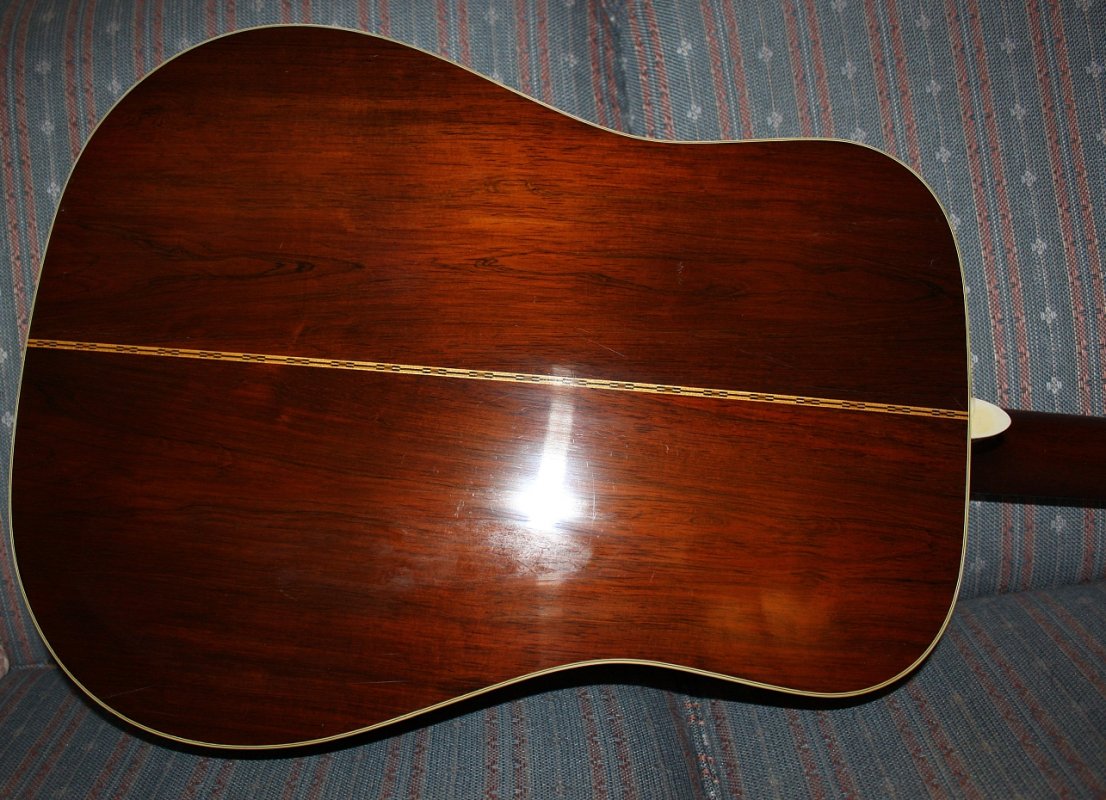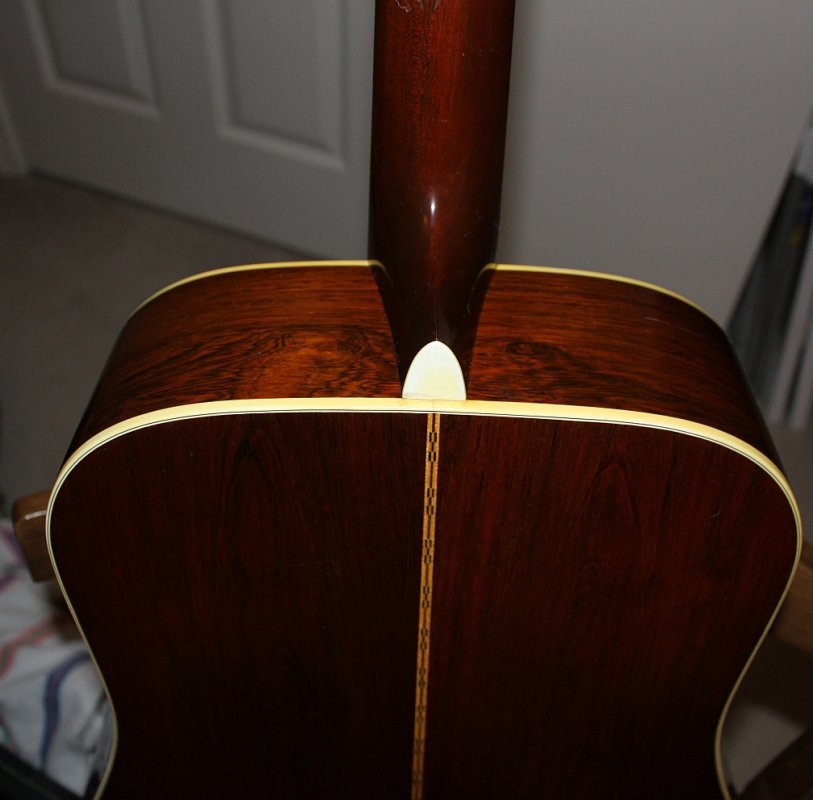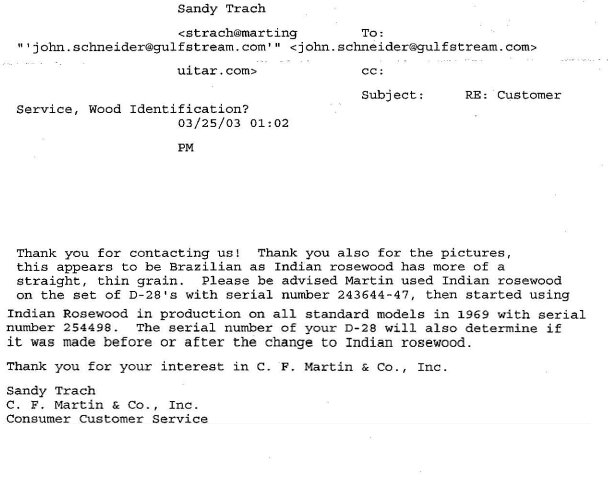Great answers, guys.
I think the reason this question comes up a lot is that Brazilian is so expensive; i.e., questions about its perceived superiority as a tonewood are ultimately colored by its rarity / supply. You log any tree into endangered status, you'll see this happening.
If there's any real difference to be heard, tone-wise, one thing to consider is that since the late-60s anyone using Braz is using it for the pinnacle of their product line.
If you want to see another example of this market-force phenomenon -- for different reasons -- consider "The Tree." This was a mahogany tree that yielded a bunch of logs that had wonderful striped and quilt-figured grain. It was just one tree, though, so, well, you do the math.

Anyway, sadly, I think banjomike's last comment will not turn out to be the case. Will there ever be forests of old-growth Brazilian rosewood or ebony or mahogany even down the road? What about old-growth spruce for soundboards? Alaska's a big place, but at some point...
I completely agree, chasmo.
The rosewood is now like the tortoise flat picks I used to like so much. The flat picks that were genuine tortoise shell never lasted as long as a plastic pick, but they made my string attack sound more clear and precise while they were still useable. They wore out fairly quickly, as it didn't take long to fray the edges of the pick, and once frayed, the pick would crak and break on one of those frayed spots.
Those flat picks were always 2-3 times more expensive than the plastic picks too. But when Jim Dunlop introduced the Tortex flat pick, I found that while it didn't exactly reproduce the real thing, it was pretty close. And if I lost one, I didn't cry about it or fret about where I could find another one.
And since then, Dunlop and others have come out with many good alternative choices that all work very well for me.
That's the story of Brazilian to me.
I think we wanted it because it was used so much by our favorite guitar brands.
The reason why they used it was mostly due to price and availability. Martin guitar grew tired of paying the Brazilians the price of sawn lumber, so they bought a sawmill and began purchasing bought logs of rosewood at much lower cost, then sawing the logs into finish lumber here in the USA.
Where all the other guitar makers who didn't use so much rosewood bought the stuff from the Martin wood shop.
In Europe, where India is as close as S. America, the guitar companies there never had such loyalty to the wood. If a bunk of Palisander (the common name for E. Indian) was as good as Brazilian and cost less, it was purchased. And vice versa. There was more free market action in Europe than here.
Another big American difference is one (and more) of our major guitar companies never used much rosewood at all. Gibson always preferred maple to rosewood as a tone wood. So rosewood was used more for fingerboards than for backs and sides.
This left Martin room to use the wood and claim its superiority with no opposition until all the guitar makers began competing with each other much harder in the Great Depression years of the 1930s. Gibson might have bought their rosewood for Martin, but they called it Carpathian Walnut if they did.
That's just part of the rosewood story. Really, most of that story is voodoo, mostly coming from how spectacular some Brazilian Rosewood looks. It's beautiful for sure, and it's beauty can't be found in our domestic trees. Plus, the wood has a centuries-old tradition as the best wood for making guitars.
But I don't think so much would have been made of it's scarcity if the acoustic guitar had not been so popular as it was in 1969. That popularity came at the apex of the folk boom, which had caught all the guitar companies off guard when it began a decade before. By 1969, Martin had built a new factory to meet the demand, and Gibson had moved to a new factory in Nashville. Guild moved to Westerly to a larger factory. Baldwin Piano Co. purchased Gretsch to get into the guitar business.
I don't think the superiority argument would still be going if the acoustic guitar and the folk boom had not been as large. Or if it had been a fad instead of a permanent market shift.
As always, I'll never criticize anyone for their personal choices. Looks are as important to me as playability and tone are in my guitar choices, but I'm just not very particular about how visually pretty the woods are in the guitars I buy. Some are very pretty, and some are quite plain.
I'm sure I bought the pretty ones in large part because they were good looking to me. The plain ones had to sound good. Now, both probably make less difference to me than when I first bought any of them.
I probably would pass up buying a new guitar made of Brazilian now; the guitar would be hella expensive, and the cost would made me think twice about taking it out to jams or to play in public, and I know I couldn't try to cross the border with it. A pain in the butt that I would rather avoid.
Unless the wood charmed my socks off, and then I wouldn't care about all that stuff. Or if I thumped the back of that rosewood guitar and it rang like a big temple bell in Nepal. Damn straight I would buy that guitar if I could!


